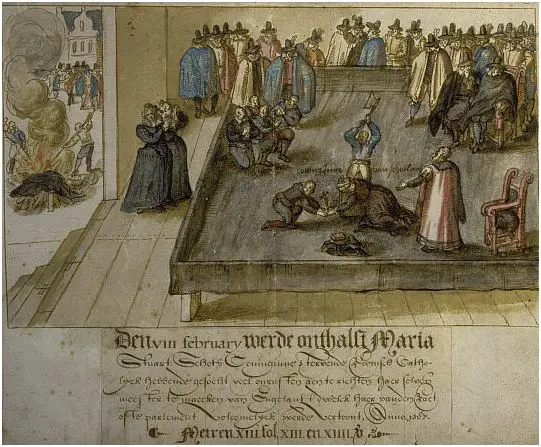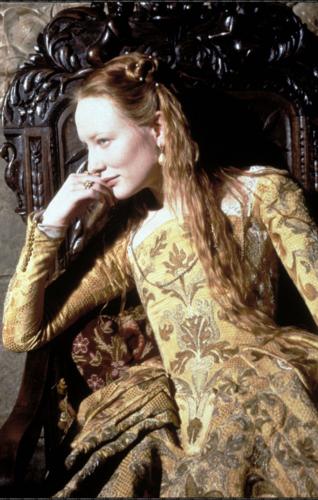Test your knowledge of Tudor executions with this fun quiz:
Tudor Executions
Correct! Although it is likely to be an exaggeration, the figure of 72,000 actually comes from a contemporary source, William Harrison’s (1534-1593) “The Description of England” which was published as part of Raphael Holinshed’s Chronicles. Harrison was chaplain to Lord Cobham. In his chapter “Of Sundry Kinds of Punishment Appointed for Offenders”, he wrote:
“It appeareth by Cardan (who writeth it upon the report of the bishop of Lexovia), in the geniture of King Edward the Sixth, how Henry the Eighth, executing his laws very severely against such idle persons, I mean great thieves, petty thieves, and rogues, did hang up threescore and twelve thousand of them in his time.”
Cardan was Girolamo Cardano (1501-1576), the Italian mathematician, physician and astrologer, who cast Edward VI’s horoscope. Cardano, in turn, cited the Bishop of Lexovia (the old name for Lisieux):
“He was affected also by a constellation with schismatic properties, and by certain eclipses, and hence and from other causes, arose a fact related to me by the Bishop of Lexovia, namely that two years before his death as many as seventy thousand persons were found to have perished by the hand of the executioner in that one island during his reign."
Wrong! It was Henry VIII's reign. Although it is likely to be an exaggeration, the figure of 72,000 actually comes from a contemporary source, William Harrison’s (1534-1593) “The Description of England” which was published as part of Raphael Holinshed’s Chronicles. Harrison was chaplain to Lord Cobham. In his chapter “Of Sundry Kinds of Punishment Appointed for Offenders”, he wrote:
“It appeareth by Cardan (who writeth it upon the report of the bishop of Lexovia), in the geniture of King Edward the Sixth, how Henry the Eighth, executing his laws very severely against such idle persons, I mean great thieves, petty thieves, and rogues, did hang up threescore and twelve thousand of them in his time.”
Cardan was Girolamo Cardano (1501-1576), the Italian mathematician, physician and astrologer, who cast Edward VI’s horoscope. Cardano, in turn, cited the Bishop of Lexovia (the old name for Lisieux):
“He was affected also by a constellation with schismatic properties, and by certain eclipses, and hence and from other causes, arose a fact related to me by the Bishop of Lexovia, namely that two years before his death as many as seventy thousand persons were found to have perished by the hand of the executioner in that one island during his reign."
Correct! Another source has her running around the scaffold and being hewn down by the executioner as she ran.
Wrong! He was describing the execution of Margaret Pole, Countess of Salisbury, on 27th May 1541. Another account has her running around the scaffold and being hewn down by the executioner as she ran.
Correct! His son, Henry Howard, Earl of Surrey, wasn't so lucky as he was beheaded on 19th January 1547.
Wrong! It was Thomas Howard, 3rd Duke of Norfolk. His son, Henry Howard, Earl of Surrey, wasn't so lucky as he was beheaded on 19th January 1547.
Correct! Sir Henry Norris, William Brereton, Sir Francis Weston and Mark Smeaton.
Wrong! The answer is four: Sir Henry Norris, William Brereton, Sir Francis Weston and Mark Smeaton.
Correct! She also had to be burned in a seated position.
Wrong! It was Anne Askew. She also had to be burned in a seated position.
Correct! He was burned at the stake on 4th February 1555.
Wrong! It was John Rogers. He was burned at the stake on 4th February 1555.
Correct! On 25th February.
Wrong! He was executed on 25th February 1601.
Correct! Thomas Seymour was executed in March 1549 and Edward Seymour was executed in January 1552.
Wrong! It's true. Thomas Seymour was executed in March 1549 and Edward Seymour was executed in January 1552.



Dear Claire,
on a trip to the Tower of London a couple of years ago I noticed at the site of the scaffold on Tower Hill, where they have the lists of names of those executed,
neither George Boleyn, nor Sir Henry Norris, William Brereton, Sir Francis Weston or Mark Smeaton’s names were listed.
Having just done this quiz, which I scored 7 out of 8 which I was pleased with, I thought I would ask you my question about the names of those 5 men missing from the lists to see if, whilst doing your research, you had any idea why?
I realise that there were many more men executed than the names appearing on the lists but am surprised to see that Sir Thomas Moore executed 1535 is there and the one after him is Thomas Darcy 1537 – nothing for 1536.
Thanks.
Sandra
Hi Sandra,
I don’t know how they chose the names to put on the scaffold memorial tablets as there are so many missing and, yes, George and the other men are not named on there. It saddens me that they are forgotten in this way, but then so are lots of others.
Well done on your score!